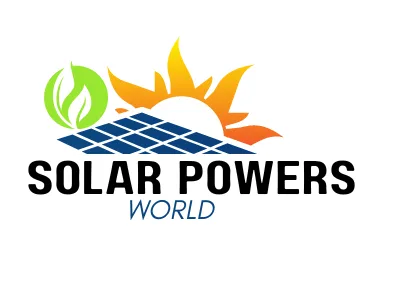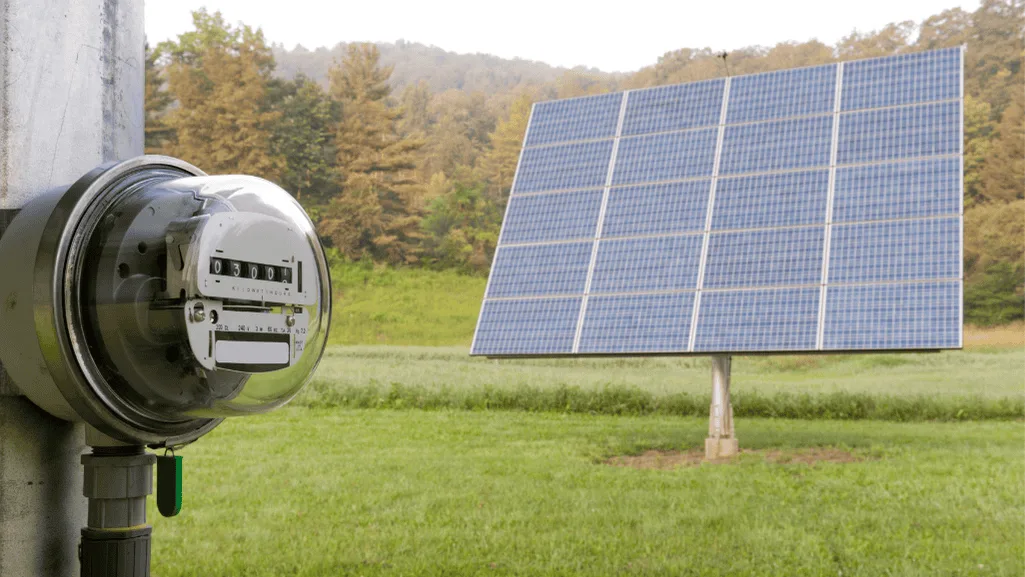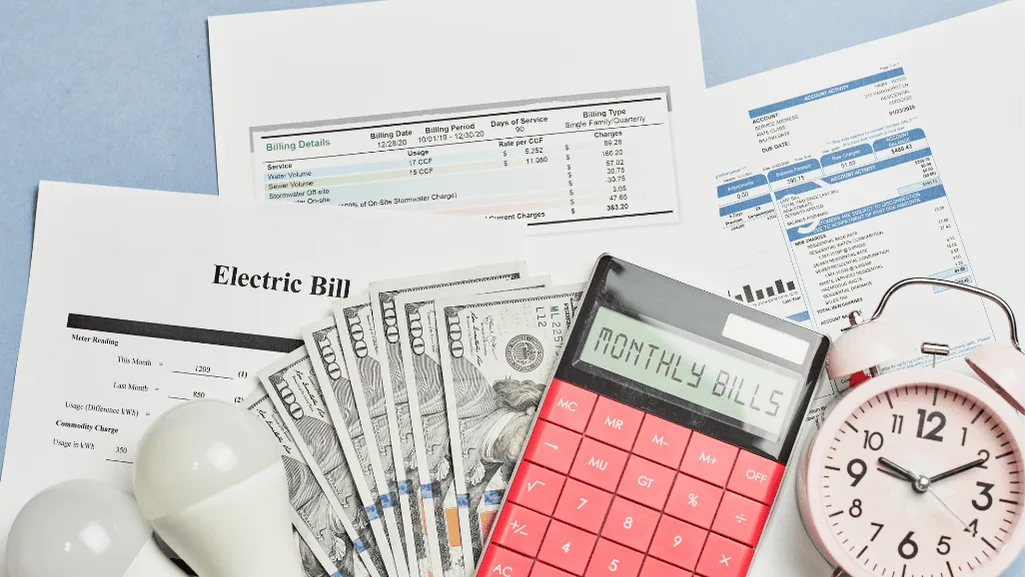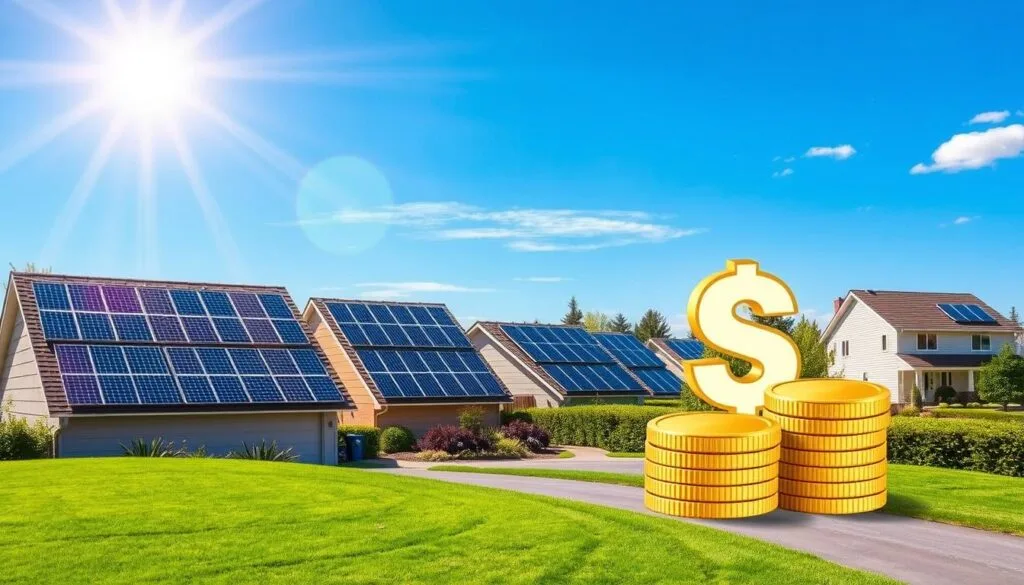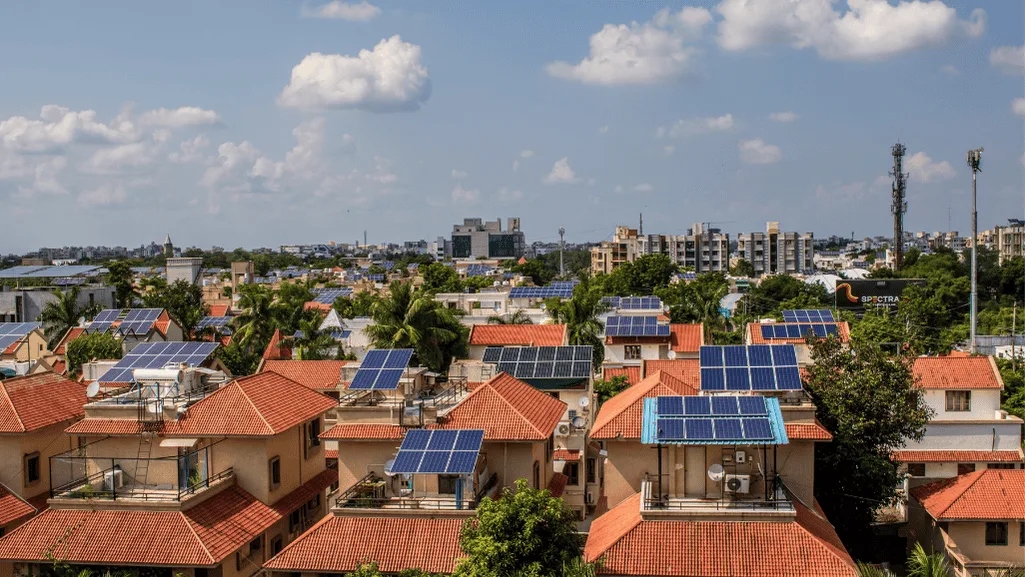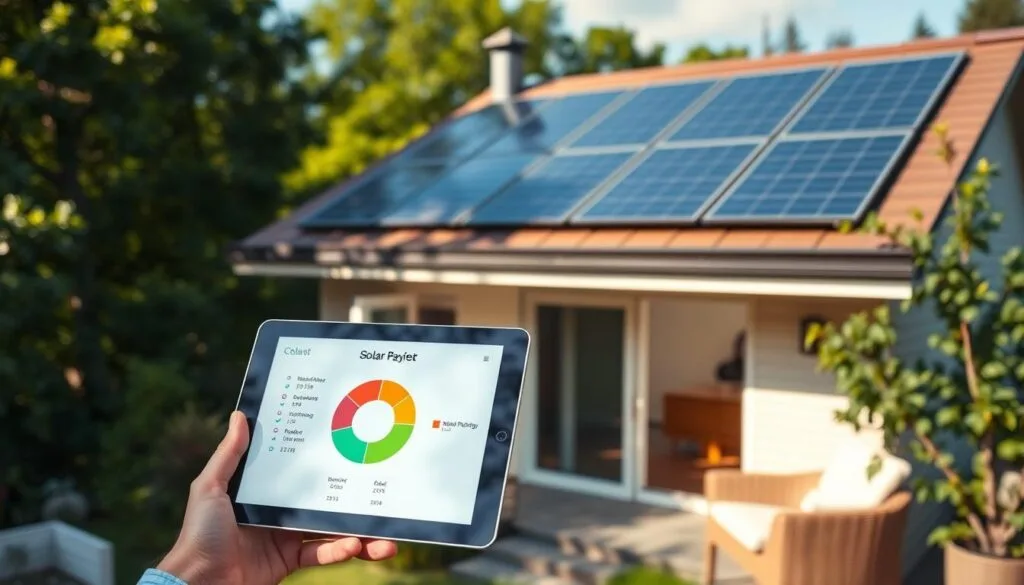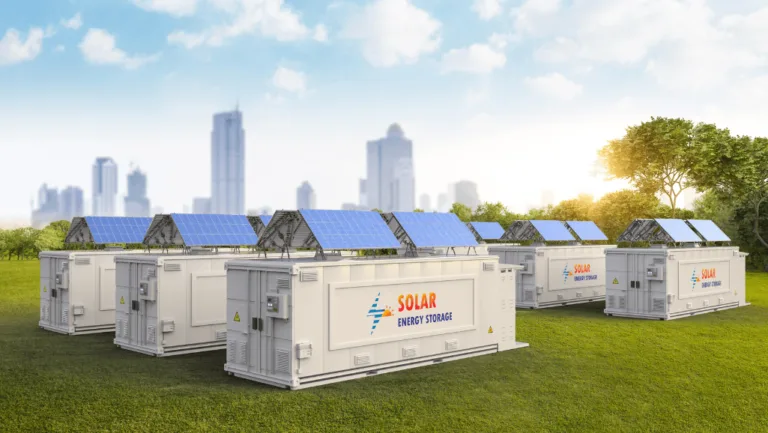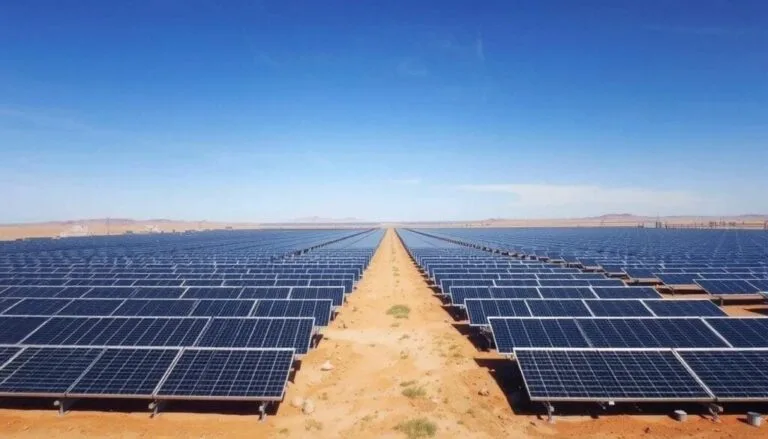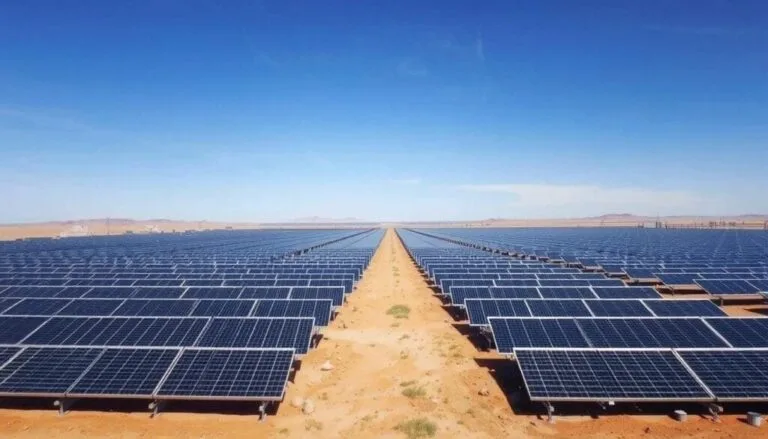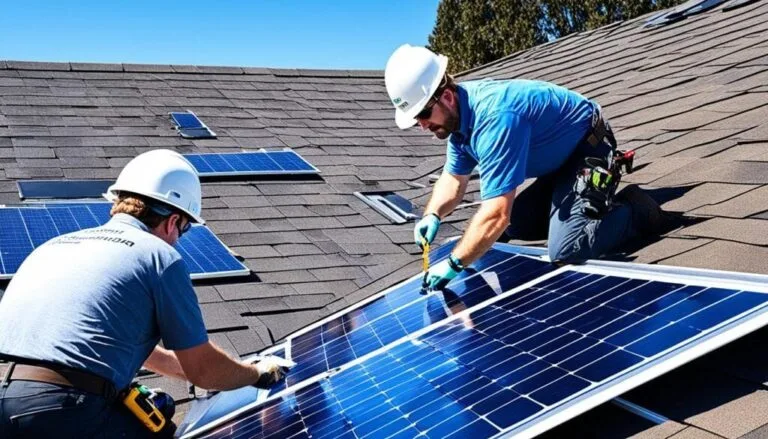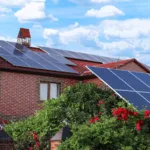Understanding the solar panel monthly cost is key for homeowners thinking about solar energy. It’s not just about making electricity. It also includes the cost of installing them and how they affect your credit through net metering. Knowing these details helps homeowners see the real financial benefits and savings of solar power.
Key Takeaways
- Anticipate a solar energy system to help achieve a 100% offset to match your home’s energy usage over time.
- Monthly utility bills may still apply, covering costs like customer service and connection to the utility grid.
- Solar battery storage can minimize your need for grid power by saving extra solar energy for later use.
- Net metering can significantly affect your average solar panel payment, thanks to credits for excess energy.
- Evaluating your home’s energy consumption and implementing energy conservation strategies can amplify savings.
- Local weather conditions and the efficiency of your solar system play a crucial role in energy production.
- Diverse financing options like loans and leases provide flexibility in managing the costs of solar panel installation.
Understanding Your Solar Panel Monthly Cost
Using solar power means knowing the ongoing costs of solar panel systems. It’s important to figure out how to calculate monthly payment for solar panels. Also, understanding the average cost of solar panel bills is key. Many factors affect the monthly cost of owning a solar system.
Factors Affecting the Average Solar Panel Bill
Several important factors influence your monthly solar panel costs. The size and efficiency of your system are crucial. Your location also matters, as it affects sunlight exposure and energy production.
Local electricity rates and how much energy you use also play a role. For example, some areas have seen price increases to discourage high energy use. This shows how outside factors can impact your bills.
Calculating Your Energy Production and Consumption
To manage your solar panel costs, you need to balance production and consumption. Tools like a solar panel savings calculator help with this. They estimate savings and costs based on your situation.
These tools consider different rate plans. For example, time-of-use rates can change costs based on when you use energy. This is important for planning your energy use.
Deciphering the True-Up Statement
At the end of each billing cycle, you get a True-Up statement. It’s important for understanding your net expenses. It shows the balance between energy used and credits from excess solar power.
Understanding this statement helps you predict your average cost of solar panel bills. It’s like an audit for your solar investment. This ensures you’re getting the most out of your solar panels.
As solar power grows, knowing the costs is key. It helps users get the most from their investment. This supports a sustainable energy future.
Initial Investment vs. Ongoing Solar Panel Payment Plans
Choosing solar energy means deciding between a big upfront cost or a payment plan. Both choices affect your wallet and your energy bills over time.
Buying solar panels outright costs about $18,000. This way, you own them and might not pay for electricity after 7 to 10 years, based on stats.
On the other hand, solar panel financing options like leases let you save on electricity right away without paying upfront. Companies like PosiGen offer leases with no initial cost. You pay a monthly fee that’s often less than your current electricity bill. PosiGen also promises savings from the start, includes maintenance, and upgrades your system.
| Payment Option | Upfront Cost | Average Monthly Cost | Term |
|---|---|---|---|
| Purchase with Cash | $18,000 | $0 after ROI* | N/A |
| Solar Lease | $0 | $50 – $250 | Varies |
| Solar Loan | Variable down payment | Depends on rate | 5-20 years |
*ROI refers to Return on Investment period, averaging between seven to ten years for solar panels.
If the upfront cost is too high, consider an affordable solar panel installment plan. Solar loans work like car or home loans, spreading the cost over 5 to 20 years. You need a good credit score for the best rates.
In conclusion, the choice between buying solar panels upfront or using a payment plan depends on your finances and energy goals. Buying upfront means no more bills, while leasing offers lower costs and maintenance.
Monthly Bill for Solar Panels and Net Metering Insights
Exploring net metering and its impact on your solar energy costs is key. It helps you reduce your monthly electric bill with solar panels. Knowing this is vital when choosing between solar panel lease vs. buy monthly cost.
How Net Metering Affects Your Monthly Solar Expenses
Net metering tracks energy use and solar panel excess. You get credits for the extra energy sent to the grid. These credits lower your utility bills, making them more manageable.
The Difference Between NEM1, NEM2, and NEM3 Programs
The main differences in net metering programs like NEM1, NEM2, and NEM3 are in credit values and application. System charges and connection fees also vary. These factors are crucial when comparing solar panel lease vs. buy monthly cost.
| Program | Credit Value | Monthly Savings Potential | Connection Fees |
|---|---|---|---|
| NEM1 | High | Up to $90 | Low |
| NEM2 | Medium | Up to $70 | Medium |
| NEM3 | Variable | Up to $50 | High |
Grasping these details aids in making informed decisions. It helps you choose between leasing, buying, or skipping solar. This way, you can align your choice with your financial and energy goals.
Average Monthly Savings with Solar Panels
More and more homeowners are choosing solar power to reduce electricity bills with solar panels. They want to save money and help the planet. The savings from solar panels are real, thanks to data from homes all over the United States.
In 2021, the average U.S. electric bill was $121.01. But people with solar panels often pay much less. The amount saved depends on the solar system’s size, local rates, and how much energy they use.
A solar array’s ability to cut down electricity bills depends on its size and how much energy it produces. The average home solar array is 7.15 kW, making about 965 kWh a month. This is more than the average U.S. home uses, 886 kWh. So, homeowners can save money and sometimes even get credits for extra energy.
| State | Estimated Monthly Savings |
|---|---|
| Utah | $80.87 |
| Hawaii | $177.78 |
Thanks to better technology and tax credits, getting solar panels is easier and cheaper. The savings vary by state because of different electricity costs and usage.
Long-term, the savings from solar panels are huge. They can save homeowners from $28,000 to $120,000 over time. This depends on where you live and how much electricity costs. So, solar panels are not just a quick fix but a smart long-term investment.
Affordable Solar Panel Financing Options
Switching to solar energy is a big step, with costs averaging $31,558 for a system in the U.S. But, there are many ways to make it more affordable. Options like solar leases, purchases, loans, and assistance programs help. They make it easier to start using renewable energy and save money on bills over time.
Comparing Solar Panel Lease vs Buy Options
Leasing solar panels means you don’t have to pay a lot upfront. You pay a fixed monthly fee for the panels, which includes installation and upkeep. Buying panels outright gives you full ownership right away. You can also get tax credits and other incentives, which can lower the cost a lot.
Low-Interest Solar Panel Loans and Payment Assistance
Low-interest loans make it easier to afford solar panels. Banks offer loans with rates from 6% to 36%. The FHA 203(k) loan program is a great example. It lets you install solar panels when you buy a home, making it a convenient option.
| Financing Type | Interest Rates | Benefits |
|---|---|---|
| Personal Loans | 6% – 36% | Quick funding, no home equity required |
| Home Equity Loans | Single-digit APR | Tax-deductible interest, long repayment periods |
| FHA 203(k) Loan | Varies | Integrates solar financing with home purchase |
Choosing the right financing depends on your financial situation and goals. With the right incentives and planning, solar energy can be a smart choice. It offers both environmental benefits and immediate financial savings.
Managing Solar Panel Payments Efficiently
Looking into solar panel payment options is key for homeowners wanting to get the most from their solar investment. With new solar tech and financial plans, paying for solar panels is easier and fits different budgets. Here are some important strategies to think about:
- Direct Debits and Automated Payments: Automatic payments help make sure your solar panel lease payments are on time. This avoids late fees and keeps your service running smoothly.
- Adjustable Payment Plans: Some companies offer payment plans that change with your energy use. This is great when the sun’s output changes with the seasons.
- Refinancing Options: If interest rates go down or your credit score improves, refinancing your solar loan can lower your monthly payments. This can save you money over time.
Also, knowing about financial incentives can make solar panels more affordable. Using the Investment Tax Credit (ITC) can cut your taxes by 30% of the installation cost. Plus, many states offer extra help like net energy metering (NEM) programs and solar rebates. These can increase your savings from solar.
| Incentive Type | Description | Financial Impact |
|---|---|---|
| Federal ITC | 30% tax credit on installation costs | Reduces upfront cost significantly |
| State Rebates | Cash back incentives based on system size or performance | Direct cash savings, varies by state |
| NEM Programs | Credits for excess energy produced | Lowers monthly energy bills |
Good managing solar panel payments makes solar energy more reachable and boosts financial gains. By picking the best solar panel payment options and using incentives, homeowners can get a faster return on their investment. They also enjoy long-term savings on energy.
Budget-Friendly Solar Panel Payments and Reducing Expenses
To make solar energy more accessible, it’s key to understand affordable solar panel payments. Knowing how to lower monthly costs is crucial. With the right payment plans and regular budget checks, solar panels can be more affordable.
Tips for Lowering Monthly Solar Panel Costs
One way to cut costs is to size your solar system right for your energy needs. Avoiding oversized systems saves upfront costs and uses resources better. Also, using federal solar tax credits can cut the initial cost by 30%. This makes solar more affordable.
Choosing high-efficiency panels, like monocrystalline, can also help. They produce more power in less space, saving money in the long run.
Optimizing Solar Panel Payment Schedules
Choosing the right payment schedule is key. It should fit your financial flow and energy use. Seasonal changes affect solar output, so adjust payments accordingly for better savings.
Payment plans like those from Flo Energy offer flexibility. They let you start with small payments, easing financial pressure.
Changing your energy habits can also save money. Use solar when it’s most productive and cut grid use during high rates. Adding energy-efficient appliances and smart home systems can also help manage energy better, lowering bills.
| Year | Average Cost (per watt) | Projected Savings (over 25 years) |
|---|---|---|
| 2023 | $3.67 | $37,500 |
| 2022 | $3.28 | $32,800 |
| 2021 | $3.07 | $30,700 |
Investing in solar panels is smart for the planet and your wallet. With the right planning and technology, you can enjoy solar energy without breaking the bank.
Calculating Monthly Solar Panel Expenses
Thinking about solar energy? It’s key to know how to calculate monthly solar panel costs for homeowners. You need to look at the initial cost, savings, and other expenses like maintenance and future rate hikes.
The cost of solar panels per month should show the full financial effect. This includes the initial cost, tax breaks, panel efficiency, and long-term savings.
- The average solar panel system costs about $20,000. But, with tax incentives, it drops to around $14,000.
- Households can save about $25,800 over 25 years. This means big monthly savings, with costs paid back in about 8.5 years.
To figure out calculating monthly solar panel expenses, consider these:
- Total installation cost (including incentives)
- Expected panel life (about 25 years)
- Monthly energy production
- Maintenance and extra equipment costs over time
These factors help compare monthly solar costs to old electric bills. A 6-8 kW system, for example, costs about $25,000. The number and efficiency of panels depend on location, roof, and sunlight.
Choosing solar panels should consider panel performance, energy needs, budget, and savings goals. By carefully looking at these, homeowners can find out their monthly solar costs. This ensures a smart investment in renewable energy that fits their financial and personal plans.
Monthly Solar Panel Savings: Expectations vs. Reality
Homeowners often dream of big solar panel monthly savings when they think about solar energy. The idea of cutting down or even eliminating electricity bills is very appealing. But, the actual savings can change a lot based on several things like system size, how much energy you use, sunlight levels, and what your utility company charges.
For example, systems from Freyr Energy can start saving you money in about four years. This is especially true in places like Leh and Ladakh where the sun shines brightly. It’s important to know that while average monthly solar panel expenses can drop a lot, you’ll still need to pay back the cost of the panels in the first few years.
It’s also important to think about keeping your solar power system in good shape. Simple tasks like cleaning the panels to remove dirt are key to getting the most energy. While unexpected repairs can add to costs, solar systems are generally easy to maintain compared to other home systems.
| Cost Factor | Details | Impact on Savings |
|---|---|---|
| Initial Installation | Average cost of an 8 kW system is approximately $26,000 before incentives. | High initial outlay, but significant potential savings in the long term. |
| Solar Incentives | Federal Residential Clean Energy Credit reduces investment by 30%. | Lower effective cost increases ROI speed. |
| Net Metering | Credits for excess electricity generated. | Contributes to monthly savings and faster system payback. |
| Maintenance Costs | Primarily involves regular cleaning. | Minimal impact on monthly expenses. |
To get a clear picture of what to expect, it’s best to do a detailed analysis of these factors and your local conditions. While solar panel monthly savings are real, each household will see different results based on their specific situation and the efficiency of their solar system.
Solar Panel Cost Breakdown and Payment Transparency
Looking closely at the solar panel cost breakdown shows us what makes up the total cost. This helps us see where our money goes and how we can save upfront. We can do this by making smart choices and using tax credits.
Understanding the Components of Solar Panel Installation Costs
The cost of solar panel installation has many parts. These include the panels, the inverter, labor, and more. The panels and inverter make up about 46% of the cost. For example, efficient monocrystalline panels cost between $0.75 to $1.50 per watt.
Labor, like installation and electrical work, is a big part of the cost too. Other costs, like permits and inspections, add up. To learn more, check out this detailed breakdown.
Monthly Solar Panel Subscription Services Explained
For those who don’t want to pay a lot upfront, monthly solar panel subscription services are a good choice. These services let you rent the system instead of buying it. This means a small monthly fee instead of a big upfront cost.
This option also includes maintenance and repairs, depending on the service. If your home gets a lot of sunlight, this can save you a lot on energy bills. Savings can be as much as $28,000 to $120,000 over 25 years.
With a clear solar panel cost breakdown, you can decide whether to pay upfront or in monthly installments. Both options have their benefits, based on your financial situation and energy goals.
Solar Panel Tax Credits and Their Impact on Monthly Bills
Solar panel tax credits make solar energy a great choice for homeowners in the U.S. These credits lower the cost of installing solar panels. They also affect monthly payments when you finance solar panels.
The federal solar tax credit lets homeowners deduct 30% of the solar system’s cost from their taxes. This is true for systems installed in 2022 or 2021. The credit was 26% then and will decrease unless the law changes by 2032. This shows how solar energy is good for the planet and your wallet.
For example, if a homeowner spends $18,000 on solar, they can get a $5,400 tax credit. Adding state incentives, they could save up to $8,190. This makes solar panels much more affordable.
- Getting a tax credit right away means more money for other things. It helps with monthly budgeting.
- Solar panels increase your home’s value without raising property taxes.
- They also save you money on energy bills over time.
| Year Installed | Tax Credit Percentage | Potential Savings for an $18,000 System |
|---|---|---|
| 2021 | 26% | $4,680 |
| 2022 – 2032 | 30% | $5,400 |
With these numbers, it’s clear that solar panel tax credits help with both the initial cost and monthly payments. This makes solar power a smart choice for your wallet and the planet. It’s a big step towards using clean energy at home.
Conclusion
As the sun sets on our look at solar panel economics, it’s clear that a smart approach is key. By managing solar panel payments well and choosing the right financing, we can save a lot. Solar panels are not just good for the planet; they’re also a smart financial choice.
They can last up to 25 years and help homeowners save a lot on energy bills. In some cases, people can even get their bills to zero. This shows how solar power can cut down on long-term costs.
In Bedford, Massachusetts, a family saved a lot with their 6.9 kW solar setup. This proves that picking the best solar panel payment plans is important for saving money. Around the world, places like India show different results because of local factors.
Changes in policies, like in California and Arizona, also affect solar economics. These changes remind us that solar economics is always changing.
In short, solar power lights the way to a more sustainable and affordable energy future. To make the most of renewable energy, we need to stay up-to-date on utility rates and changes. We should also consider DIY solar power installations when it makes sense. These steps will help our planet and lead to better savings for families worldwide.

